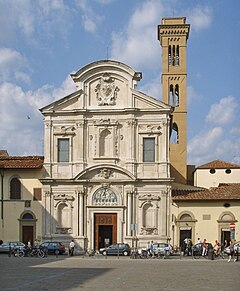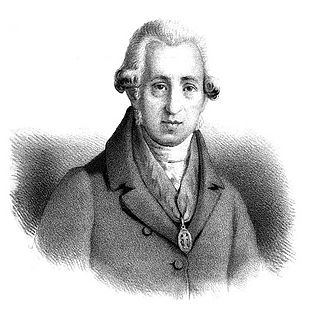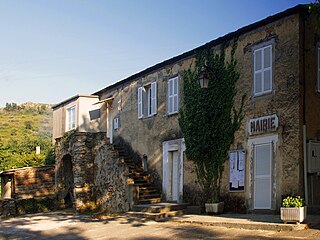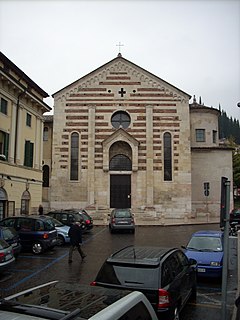
Paolo Uccello, born Paolo di Dono, was an Italian painter and mathematician who was notable for his pioneering work on visual perspective in art. In his book Lives of the Most Excellent Painters, Sculptors, and Architects Giorgio Vasari wrote that Uccello was obsessed by his interest in perspective and would stay up all night in his study trying to grasp the exact vanishing point. While his contemporaries used perspective to narrate different or succeeding stories, Uccello used perspective to create a feeling of depth in his paintings. His best known works are the three paintings representing the battle of San Romano, which were wrongly entitled the "Battle of Sant' Egidio of 1416" for a long period of time.

The Badìa Fiorentina is an abbey and church now home to the Monastic Communities of Jerusalem situated on the Via del Proconsolo in the centre of Florence, Italy. Dante supposedly grew up across the street in what is now called the 'Casa di Dante', rebuilt in 1910 as a museum to Dante. He would have heard the monks singing the Mass and the Offices here in Latin Gregorian chant, as he famously recounts in his Commedia: "Florence, within her ancient walls embraced, Whence nones and terce still ring to all the town, Abode aforetime, peaceful, temperate, chaste." In 1373, Boccaccio delivered his famous lectures on Dante's Divine Comedy in the subsidiary chapel of Santo Stefano, just next to the north entrance of the Badia's church.

Pisanello, known professionally as Antonio di Puccio Pisano or Antonio di Puccio da Cereto, also erroneously called Vittore Pisano by Giorgio Vasari, was one of the most distinguished painters of the early Italian Renaissance and Quattrocento. He was acclaimed by poets such as Guarino da Verona and praised by humanists of his time, who compared him to such illustrious names as Cimabue, Phidias and Praxiteles.

Riva del Garda is a town and comune in the northern Italian province of Trento of the Trentino Alto Adige region. It is also known simply as Riva and is located at the northern tip of the Lake Garda.

Lombardo, the name of a family of Venetian sculptors and architects; their surname was apparently Solaro, and the name of Lombardo was given to the earliest known, Martino, who emigrated from Lombardy to Venice in the middle of the 15th century AD and became celebrated as an architect.

Giovanni Francesco Caroto was an Italian painter of the Renaissance active mainly in his native city of Verona.

Putignano is an Italian town of 26 644 inhabitants located in the Murgia of the Metropolitan City of Bari, in Apulia, southern Italy. It is known for its ancient Carnival, for textile manufacturing companies and for karst caves.

Montemagno is a comune (municipality) in the Province of Asti in the Italian region Piedmont, located about 50 kilometres (31 mi) east of Turin and about 13 kilometres (8 mi) northeast of Asti. As of 31 December 2010 it had a population of 1,228 and an area of 15.9 square kilometres (6.1 sq mi).

The chiesa di San Salvatore di Ognissanti or more simply chiesa di Ognissanti, is a Franciscan church located on the piazza of the same name in central Florence, region of Tuscany, Italy. Founded by the lay order of the Umiliati, the church was dedicated to all the saints and martyrs, known and unknown.

Giambettino Cignaroli was an Italian painter of the Rococo and early Neoclassic period.
Alessandro Turchi was an Italian painter of the early Baroque, born and active mainly in Verona, and moving late in life to Rome. He also went by the name Alessandro Veronese or the nickname L'Orbetto. His style has been described as soft and Caravaggesque at the same time.

Aurelio Lomi was an Italian painter of the late-Renaissance and early-Baroque periods, active mainly in his native town of Pisa, Tuscany.

Louis Masreliez, born Adrien Louis Masreliez, was a French born, Swedish painter and interior designer.

Liberale da Verona (1441–1526) was an Italian painter of the Renaissance period, active mainly in Verona.
Charitable institutions attached to churches in Rome were founded right through the medieval period and included hospitals, hostels, and others providing assistance to pilgrims to Rome from a certain "nation", which thus became these nations' national churches in Rome. These institutions were generally organised as confraternities and funded through charity and legacies from rich benefactors belonging to that "nation". Often also they were connected to national "scholae", where the clergymen were trained. The churches and their riches were a sign of the importance of their nation and of the prelates that supported them. Up to 1870 and Italian unification, these national churches also included churches of the Italian city states.

Santo Stefano is a church in Genoa, northern Italy. Located on a hill overlooking the central Via XX Settembre, it is one of the most outstanding examples of Romanesque architecture in the city.

Rapale is a commune in the French Department of Haute-Corse on the island of Corsica.

Stefano da Verona was an Italian painter who was active in Verona.

The Church of the Santissima Trinità is a Romanesque style, Roman Catholic church in Verona, region of Veneto, Italy.

The Abbey of the Holy Spirit at Morrone, known by various titles, is a former monastery some five kilometers outside of the town of Sulmona, at the base of Monte Morrone, in the Province of L'Aquila, region of Abruzzo, Italy.





















